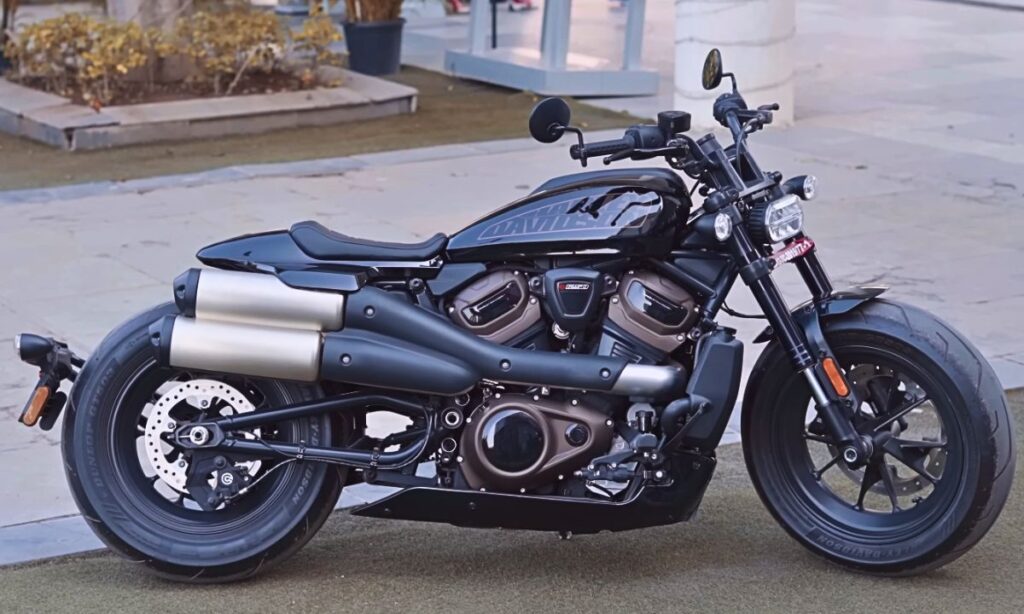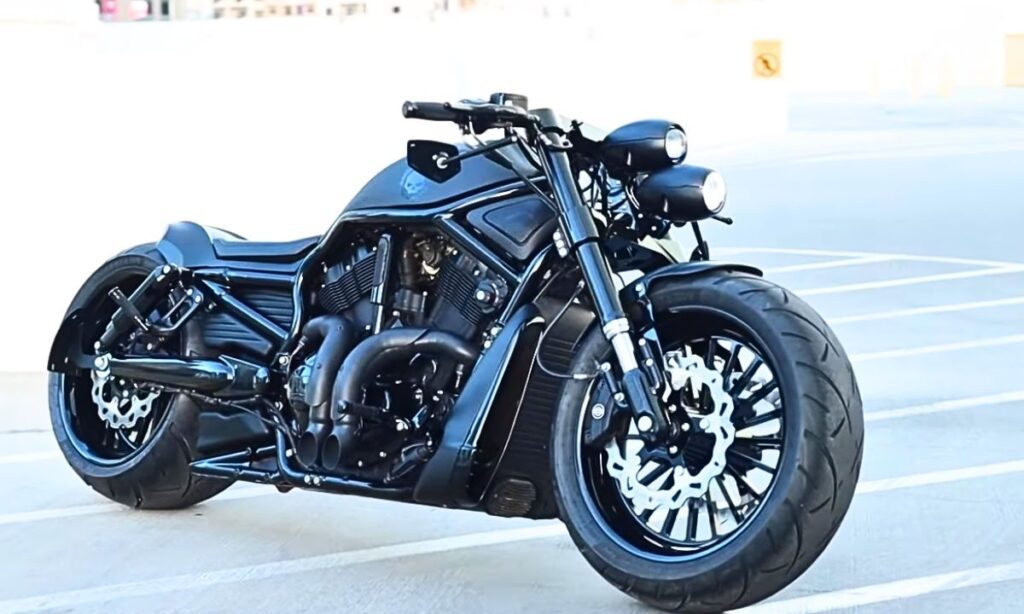For the maintenance and performance of your Harley motorcycle, understanding your Harley Davidson’s fork oil capacity is crucial.
This capacity, which varies across different models and years, plays a pivotal role in ensuring smooth and responsive handling of the motorcycle.
So, we have compiled the Harley fork oil capacity chart to help you understand the right amount of oil for your Harley.
Why Do You Need a Harley Fork Oil Capacity Chart?

A Harley Fork Oil Capacity Chart is an essential tool for any Harley Davidson owner.
It provides accurate information about the recommended oil capacity for different models, ensuring optimal performance and longevity of your motorcycle’s fork suspension.
Adhering to these recommendations can prevent damage caused by overfilling or underfilling, maintain the desired ride comfort and bike handling characteristics, and increase the lifespan of your forks.
Therefore, possessing a Harley Fork Oil Capacity Chart is crucial for maintaining your Harley Davidson motorcycle at its peak performance.
Harley Fork Oil Capacity Chart
The Fork Oil Capacity Chart is an essential resource for Harley motorcycle enthusiasts and mechanics alike.
The chart provides the specific fork oil capacities for various Harley Davidson models, ensuring the correct amount of oil is used during maintenance.
Here is the fork oil capacity chart:
| Model | Year | Wet (Oz.) | Dry (Oz.) |
| FXSTD | 2007 | 10.5 | 11.6 |
| FXST | 2007-09 | 11.5 | 12.5 |
| FLST | 2007-09 | 12.4 | 13.4 |
| FLST | 1986-2006 | 11.5 | 12.5 |
| FXWG/FXST | 1985-2006 | 10.2 | 11.2 |
| FXWG/FXST | 1980-84 | 9.0 | 10.2 |
| Dyna Wide Glide | 1991-2005 | 10.2 | 11.2 |
| Dyna/Low Rider | 1991-2005 | 9.2 | 10.2 |
| FXR/FXRS | 1991-94 | 9.0 | 10.2 |
| FXR/FXRS | 1985-86 | 6.0 | 7.0 |
| FX/FXE | 1973-83 | 5.0 | 6.0 |
| FX/FXE | 1972 | 5.5 | 6.5 |
| FLHR | 2002-09 | 10.1 | 11.1 |
| FLT | 1998-2001 | 8.7 | 9.7 |
| FLT | 1980-97 | 7.75 | 8.5 |
| FL/FLH | 1977-84 | 7.75 | 8.5 |
| FL/FLH | 1948-77 | 6.5 | 7.0 |
| Sportster XL 883 Hugger | 1992-99 | 10.7 | 12.1 |
| Sportster XL 883 Hugger | Till 1991 | 9.0 | 10.2 |
| Sportster | 2004-08 | 10.5 | 11.6 |
| Sportster | 1988-2003 | 9.0 | 10.2 |
| Sportster | 1984-87 | 5.4 | 6.5 |
| Sportster | 1972-83 | 5.0 | 6.0 |
| Sportster | Till 1972 | 5.5 | 6.5 |
How Often Should You Change Fork Oil On Your Harley?
The frequency of fork oil changes on your Harley is subjective and depends on various factors such as the type of your motorcycle, the condition of your fork seals, your riding style, and the quality of your fork oil.
However, as a general rule of thumb, it is advisable to change the fork oil every 10,000 to 20,000 miles.
Notably, if you ride your Harley more aggressively or on rough terrains, the fork oil may need to be changed more frequently.
How To Change Fork Oil On Harley?
Changing fork oil on a Harley Davidson motorcycle can significantly improve its performance and your overall riding experience.
Here’s a step-by-step guide to help you through the process:
1. Gather Tools
Gather all the necessary tools for this task, including a wrench, a drain pan, new fork oil, and clean rags. Make sure your workspace is clean and well-lit.
2. Start disassembling
With your Harley on a stable surface, use a wrench to loosen the fork cap. Be careful, as the cap is under pressure from the fork spring.
3. Drain the oil
Position your drain pan under the fork, and slowly unscrew the drain plug. Allow all the old oil to drain out into the pan.
4. Cleaning and Inspection
Once all the oil is drained, take a moment to inspect the fork for any signs of damage or wear. Clean any residue from the fork internals and the drain plug.
5. Add new fork oil.
Slowly pour the required amount of new fork oil into the fork. Be sure to refer to your owner’s manual or fork oil capacity chart for the correct oil type and quantity.
6. Reassemble
Finally, screw the drain plug back into place and tighten the fork cap. Wipe off any excess oil with a clean rag.
How do I Check The Fork Oil Level?
Checking the fork oil level in your motorcycle is an essential part of routine maintenance.
Here are the steps to help you through the process:
- Firstly, steady your motorcycle on a stand so that the front wheel is off the ground.
- Remove the front forks.
- Now, with the forks in a fully compressed state, measure the oil level from the top of the fork tube.
- If the oil level is too high, use a syringe to remove excess oil. If it’s too low, add more oil.
- Once the oil level is correct, replace the fork’s top cap and reinstall the forks on your motorcycle.
Remember, the fork oil level significantly impacts the performance of your motorcycle’s suspension.
Always ensure that it is at the correct level for a safe, smooth, and comfortable ride.
How To Choose The Right Fork Oil For Harley?
Choosing the right fork oil for your Harley is crucial for the bike’s performance, comfort, and safety.
Here’s a complete guide to help you:
- Always refer to your Harley’s manual to identify the viscosity and volume of oil required for the fork.
- The viscosity of fork oil affects the dampening and rebound of your bike’s front suspension.
- Using a higher-viscosity oil can stiffen the front suspension, while lower viscosity can make it softer. Choose the viscosity based on your riding style and comfort.
- Stick to reputed brands like Harley Davidson, Maxima, Motul, or Bel-Ray. These brands are renowned for quality and performance.
- Ensure that the fork oil is compatible with your Harley model. Check product descriptions or consult with a mechanic if you’re unsure.
- Look at the reviews and ratings of the fork oil. Feedback from other Harley owners can be invaluable.
- Consider how often you’re willing to change your fork oil. Some products may require more frequent changes than others.
Remember, the right fork oil can significantly enhance your Harley’s performance and your riding experience.
What Weight Is Stock Harley Fork Oil?
The stock Harley Davidson motorcycles typically come with a standard fork oil weight of 10w (10 weight).
This fork oil is designed to offer optimal damping characteristics that ensure smooth, comfortable rides.
It’s important to note that the choice of fork oil weight can significantly affect the motorcycle’s performance.
With lighter weights offering smoother rides at slower speeds and heavier weights providing better performance at high speeds or for heavier loads.


Talha Younas, the brains behind the influential motorcycle-focused website, TwoWheller.com, is a dedicated and passionate advocate for biking culture. Born and raised in a family of motorcycle enthusiasts, his love for two-wheeled transportation was ignited at an early age. His commitment to providing in-depth reviews and helpful tips for riders has established him as a respected figure in the motorcycle community.

